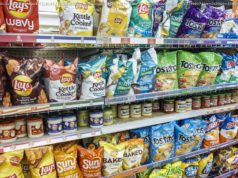Three years ago, I introduced Forbes readers to a stock strategy called the Dobermans of the Dow. This is my annual strategy update.
Three years ago, I introduced Forbes readers to a stock strategy called the Dobermans of the Dow. This is my annual strategy update. The Dobermans of the Dow is a simple stock screening system with two steps: 1) Rank Dow constituents by Return on Equity (ROE), keep the top 20. 2) Rank remaining names by Free Cash Flow Yield, keep the top ten. Those final ten stocks are your Dobermans. Based on the selection criteria, the list favors firms with above-average profitability whose shares trade at relatively cheap prices. The goal is to refresh the lineup about once a year, which for our purposes is every December 31st. Now, let’s review performance. Here is how the Dobermans performed in one of the craziest stock market years ever. The following table shows how the Dobermans have performed on a relative basis since 2018. The first quarter of the year was typified by one of the most dramatic selloffs in Wall Street history. From 2/12/2020 through 3/23/2020, the Dow fell -37.1% while the Dobermans declined -27.9%. After outperforming during the selloff phase, the Dobermans subsequently lagged the Dow during the rebound before finishing the year roughly flat. The most significant detractor from relative performance in 2020 was not owning Apple. After surging 82% in 2020, the iPhone-maker was responsible for 5.8% of the Dow’s 9.7% total return. In other words, Apple alone drove about 60% of the overall gain in the Dow. It is fairly normal for only a handful of stocks to drive the bulk of a portfolio’s return in a given year. What is more odd about Apple’s situation is how dramatically the stock has outpaced fundamentals. Over the last two years, the Cupertino-based company has averaged revenue growth of just +1.7% and operating income growth of -3.1%, yet the shares have appreciated at a whopping rate of 86.3% per year (247% cumulatively). What’s so exciting about flat growth? Perhaps investors are giddy with enthusiasm over future developments. Whatever the case, the Dobermans are selected based on how trailing fundamental data matches up to current prices, which explains why the screen no longer favors Apple. Taking a step back, obviously no one enjoys underperforming the market, even if it’s inevitable with any strategy. When it happens, it’s important to get curious about causality.






